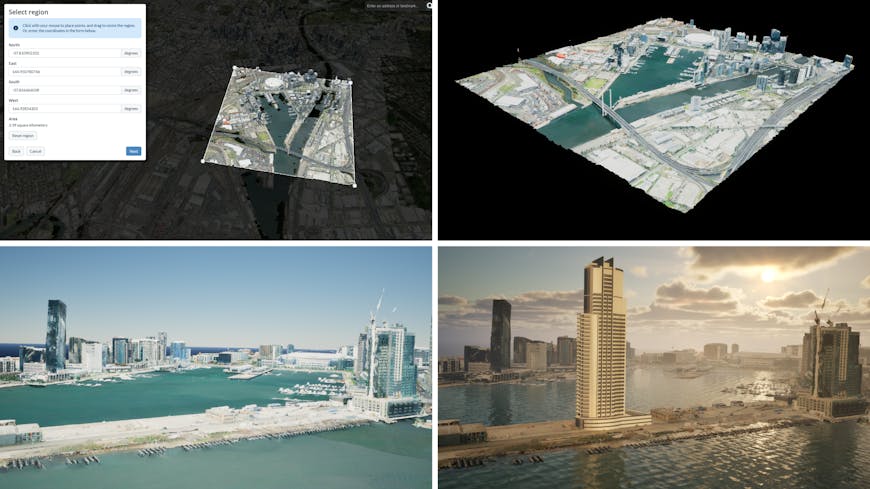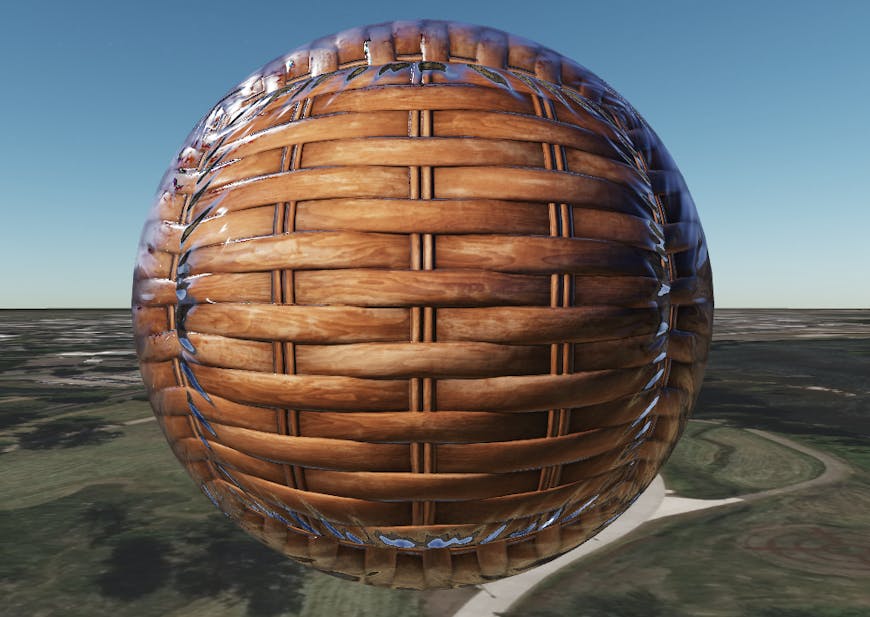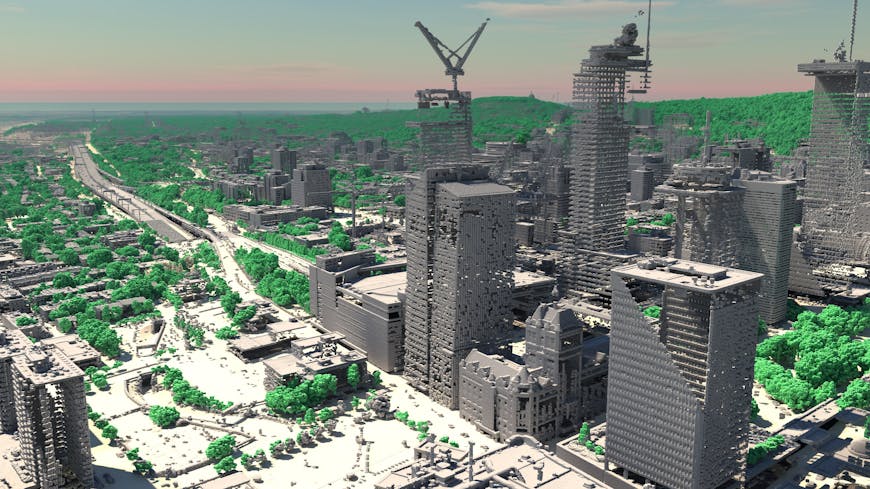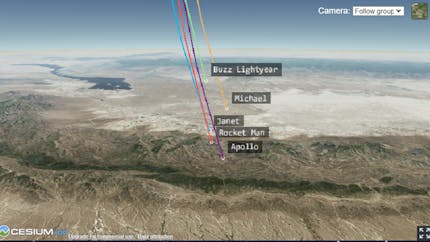Cesium Releases in June 2024
In May, we announced Cesium ion’s clipping feature; highlighted using those clips with Unreal Engine for Fortnite, Blender, and Adobe After Effects; and shared how to selectively hide regions of either 3D tilesets or terrain in CesiumJS with ClippingPolygons. Today we released the Japan 3D Buildings tileset on Cesium ion; you can learn more in this blog.

Use a 3D Tiles clip from Cesium ion to create geospatial context in an Unreal Editor project. Sketchfab model of Pivotal Point by hamma085, CC BY 4.0.
We made improvements across Cesium this month. To get notifications about our monthly releases, you can subscribe to the Cesium release roundup thread on our community forum.
CesiumJS 1.118 Release
CesiumJS 1.118 is now available. Highlights of the release include:
- Added support for glTF models with the KHR_materials_specular extension. #11970
- Added support for glTF models with the KHR_materials_anisotropy extension. #11988
- Added support for glTF models with the KHR_materials_clearcoat extension. #12006
- Fixed a bug where
scene.pickPositionreturned incorrect results against the globe whendepthTestAgainstTerrain is false. #4368 - Fixed an error in the specular reflection calculations for image-based lighting from supplied environment maps. #12008
For more details, see the changelog.

A demonstration of the KHR_materials_clearcoat extension. Model source: glTF Sample Assets, CC0 1.0.
Cesium for Unreal 2.6.0 Release
Cesium for Unreal v2.6.0 is now available. Highlights of the release include:
- Added support for Instanced 3D Meshes (I3DM) and the
glTF EXT_mesh_gpu_instancingextension. - Improved DynamicPawn movement by interpolating to its intended speed. This provides smoother movement over areas with large height variation, e.g., when flying over buildings in a city.
- Fixed an issue with pixel dithering artifacts that could appear on tilesets.
- Fixed an issue where DynamicPawn could get stuck after interrupting a flight from
UCesiumFlyToComponent. - Fixed a bug where
CesiumTileMapServiceRasterOverlay,CesiumWebMapServiceRasterOverlay, andCesiumWebMapTileServiceRasterOverlaywould attempt to load empty URLs. - Fixed a bug that caused some textures shared between multiple glTF primitives to be missing entirely.
- Fixed a bug that caused tilesets to fail to load with the "Experimental Occlusion Culling Feature" enabled.
- Fixed a problem that could cause linker errors when packaging a game using both Cesium for Unreal and the Pixel Streaming plugin in Unreal Engine 5.4.
Check the Cesium for Unreal release and the Cesium for Unreal Samples release for the full list of updates.
Cesium for Unity 1.10.1 Release
Cesium for Unity v1.10.1 is now available. This release updates cesium-native from v0.35.0 to v0.36.0. See the cesium-native changelog for a complete list of those changes.
Check the Cesium for Unity changelog for the full list of updates, and follow our Cesium for Unity tutorials to get started.
Cesium for Omniverse 0.21.0 Release
Cesium for Omniverse v0.21.0 is now available. Highlights of this release include:
- Fixed point cloud styling.
- Added
pointSizeattribute toCesiumTilesetPrimfor controlling the size of points. - Added read-only attribute
ecefToUsdTransformtoCesiumGeoreferencePrim. Previously this was stored in/CesiumSession, which has since been removed. - Fixed crash when updating globe anchor when georeferencing is disabled.
See the changelog for the full list of updates, and get started with our Cesium for Omniverse tutorials.

~10 billion-point point cloud 3D Tileset of the City of Montreal visualized with Cesium for Omniverse. Source: LiDAR aérien 2015, CC BY 4.0.
Cesium ion Updates
- You can now download 3D geospatial data as 3D Tiles or glTF to add real-world context to streaming or disconnected applications with Cesium ion’s clipping feature, also known as “clip and ship.”
- Significant improvements to the CityGML and KML/COLLADA tiling pipelines on Cesium ion, including KTX2 texture compression, CityGML tiling performance when tiling multiple files across multiple cores, the buildings tiler now taking hundreds of thousands of files as input all at once, and more. Details are here.
- A new tileset is available on Cesium ion, Japan 3D Buildings, which is countrywide, open source 3D building data from over 200 locations across Japan. Learn more about this tileset here.

To derive additional value from digital twins, Brightline Interactive’s SpatialCore platform pairs AI and the Cesium for Omniverse extension for spatial computing, empowering enterprise and public sector users to combine massive datasets and perform complex calculations.

Moritz Cermann’s Cesium-based application won the Best of Entertainment and Events category in the Google Immersive Geospatial Challenge.

New Ascent introduces students to the space industry by launching “ChipSats” to gather environmental info and tracking their descent in 3D as part of MISSION: SubSpace, an in-classroom aerospace mission experience that uses an interactive web portal built on CesiumJS.